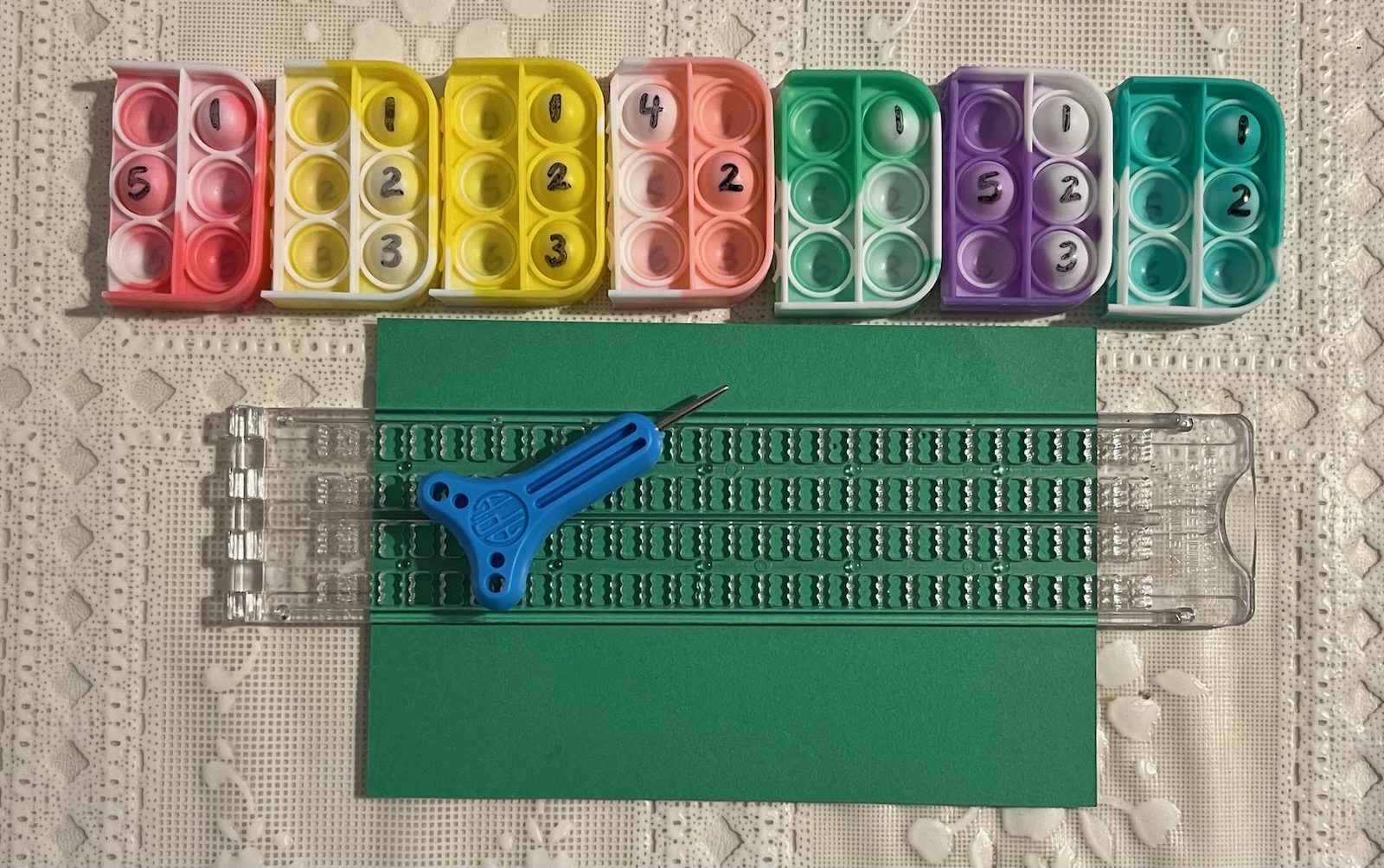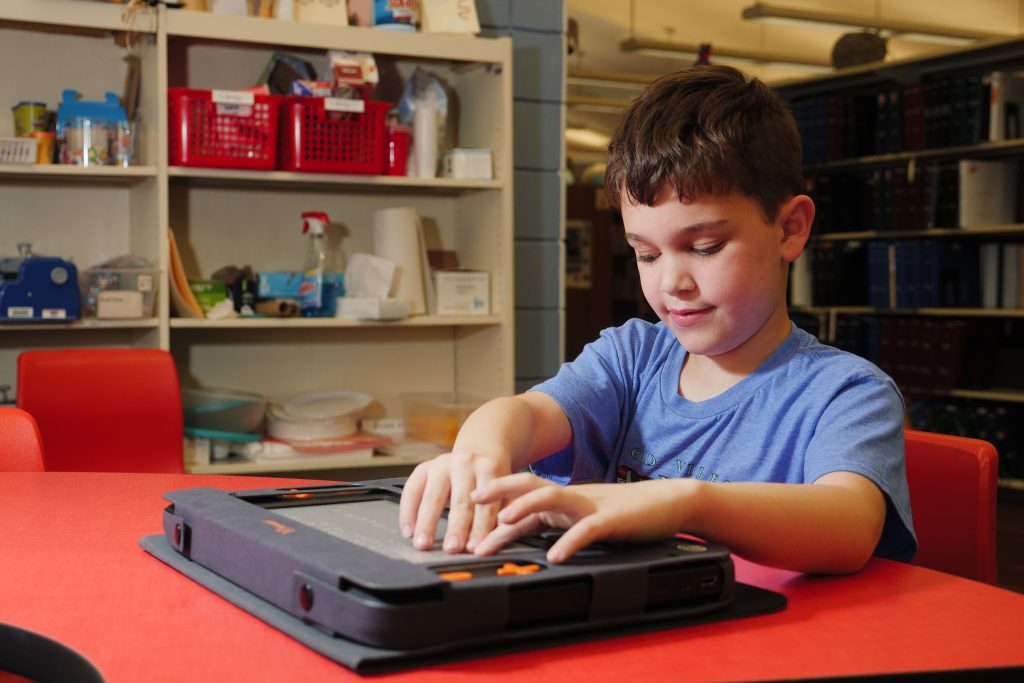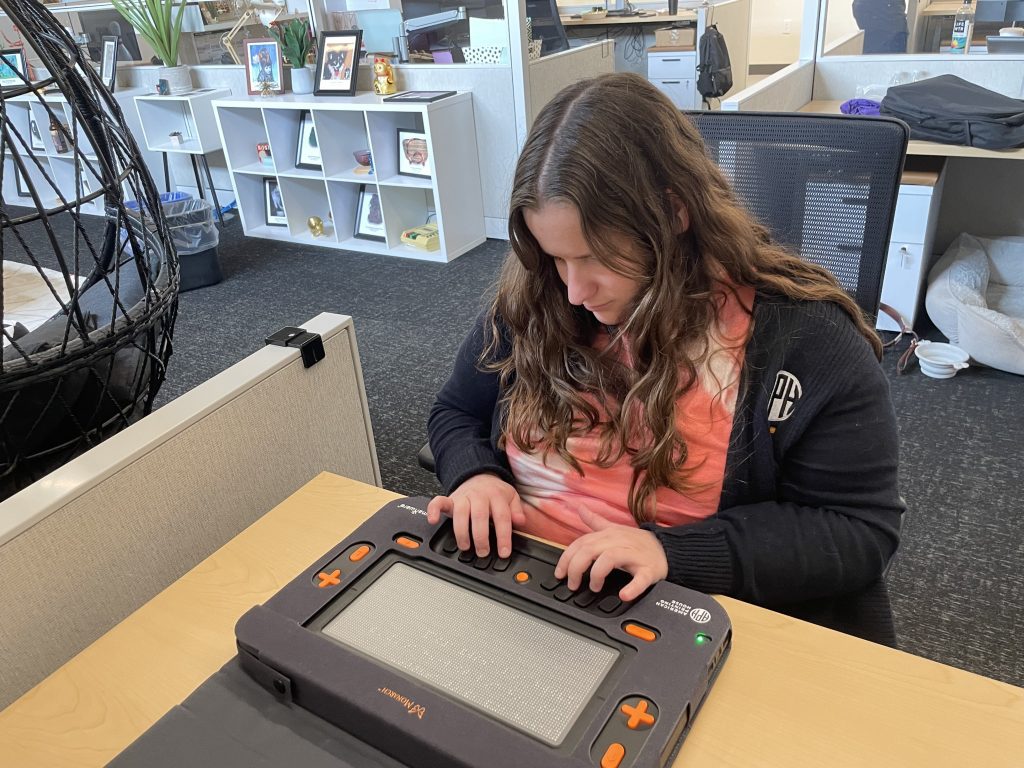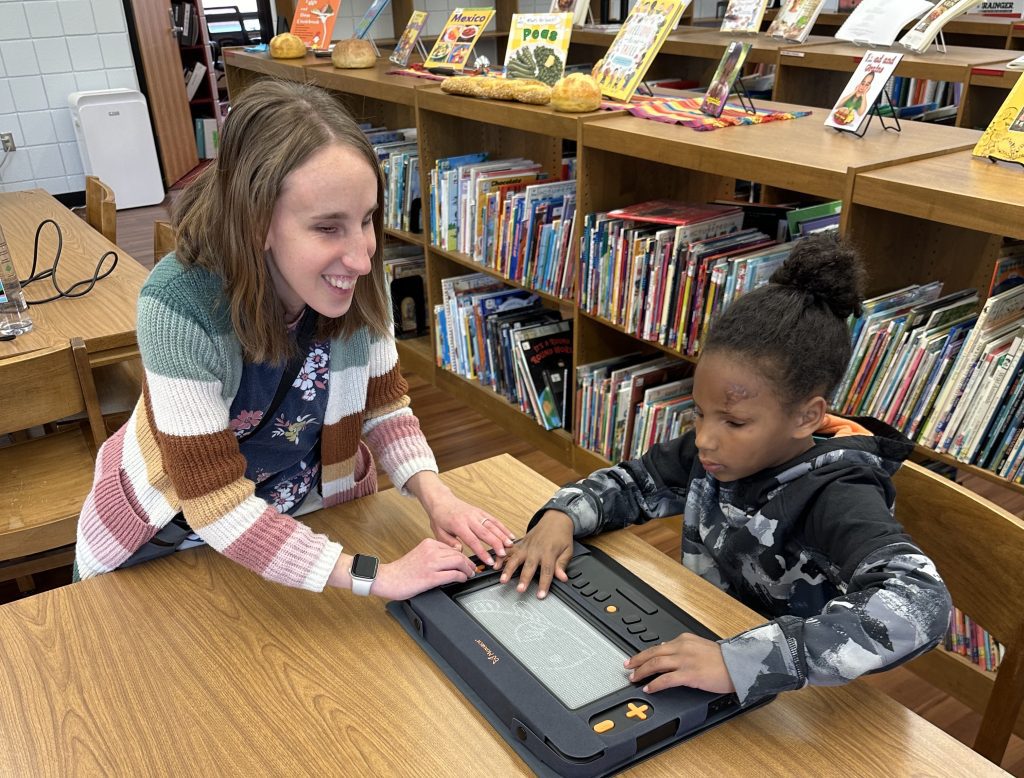Learning to Braille with a Slate and Stylus: Pop-It Braille Basics

Writing braille with a slate and stylus doesn’t have to be scary. In fact, it can be a lot of fun! In this post, you’ll learn the mechanics of writing braille with a slate and stylus, using Pop-Its toys as your guide.
Why a slate and stylus?
You can use a slate and stylus in the same context that print writers and readers use pen and paper, such as:
- Grocery lists
- Flash cards
- Task lists
- Jotting down phone numbers when you’re using or are away from your smart phone
- Labels for household items and food containers
- Keeping a journal
- Making greeting cards
Understanding standard and “mirror” braille cells
When reading print or braille or writing braille with a Perkins or a refreshable braille display, you move your eyes or hands from left to right. When writing braille with a slate and stylus, you move from right to left. Imagine a “standard” braille cell. Dots 1, 2, and 3 are in the left column, and dots 4, 5, and 6 are in the right column. Now, mentally flip over the standard braille cell and imagine its mirror image. Starting from the right, dots 1, 2, and 3 are in the right column and dots 4, 5, and 6 are in the left column.
Practicing with Pop-Its
We’ll use homemade Pop-It braille cells lined up right-to-left above a slate to write the word “braille” in Grade 1 UEB. (You can also use APH’s Pop-A-Cells to practice.)
- Create seven braille-cell Pop-Its by trimming a Pop-It toy down to six bubbles. Make sure the two columns of bubbles are lined up evenly, like a braille cell.
- Pop each Pop-It braille cells’ bubbles into the “up” position.
- Load your preferred slate with paper and set it on the table.
- For the first Pop-It, depress bubbles 1 and 2 to create the letter “b.”
- Flip over the Pop-It, and place it above your slate, aligned right.
- Note the bubbles in the “up” position represent a mirror image of the letter “b,” where Dots 1 and 2 are in the right column.
- Starting with a new Pop-It, depress dots 1, 2, 3, 5 to form the letter “r.”
- Flip it over and place it above your slate to the left of the first Pop-It. This seems counter-intuitive, but remember you’re writing right-to-left. Notice the bubbles in the up position are a mirror image of the letter “r,” where Dots 1, 2, and 3 are in the right column and Dot 5 is in the left column.
- Repeat for all letters in the word “braille,” ensuring you place each subsequent letter to the left of the one before.
- Now, use the line of Pop-Its as a guide as you braille right-to-left on your slate. To help with muscle memory, always depress a symbol’s dots in the same order. Start in the right column and depress the dots from top-to-bottom, then move to the left column and depress the dots from top-to-bottom. When brailling the letter “r,” for example, depress Dot 1, then 2, then 3 in the right column, and then move to the left column and depress Dot 5.
Once you get the hang of brailling right-to-left, set aside the Pop-Its and then braille to your heart’s content!
Share this article.
Related articles

Developing Reading and Spelling Skills on the Monarch
Literacy is one of the cornerstones of education. APH’s Monarch is overcoming obstacles to enhance reading and spelling skills for...

APH’s Jessica Minneci Discovers a Literary World on the Monarch
Jessica Minneci, APH’s Communications Associate, composes blogs during work and spends her nights drafting novels. One-line braille displays assist with...

Leveling the Playing Field: Perspective of a DeafBlind User
Danielle Burton, APH’s Communications Accessibility Editor, has long hoped for a piece of access technology that levels the playing field...
